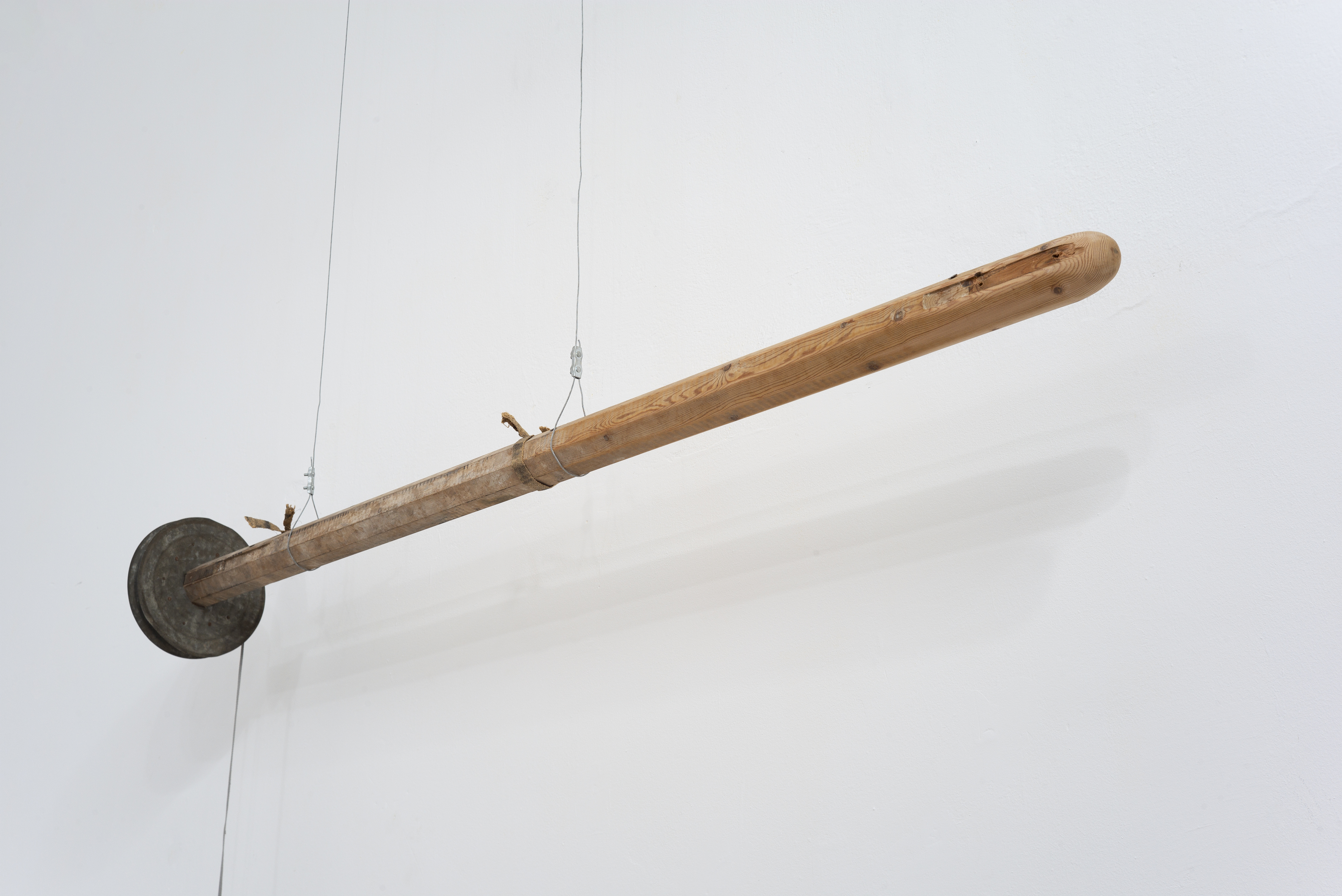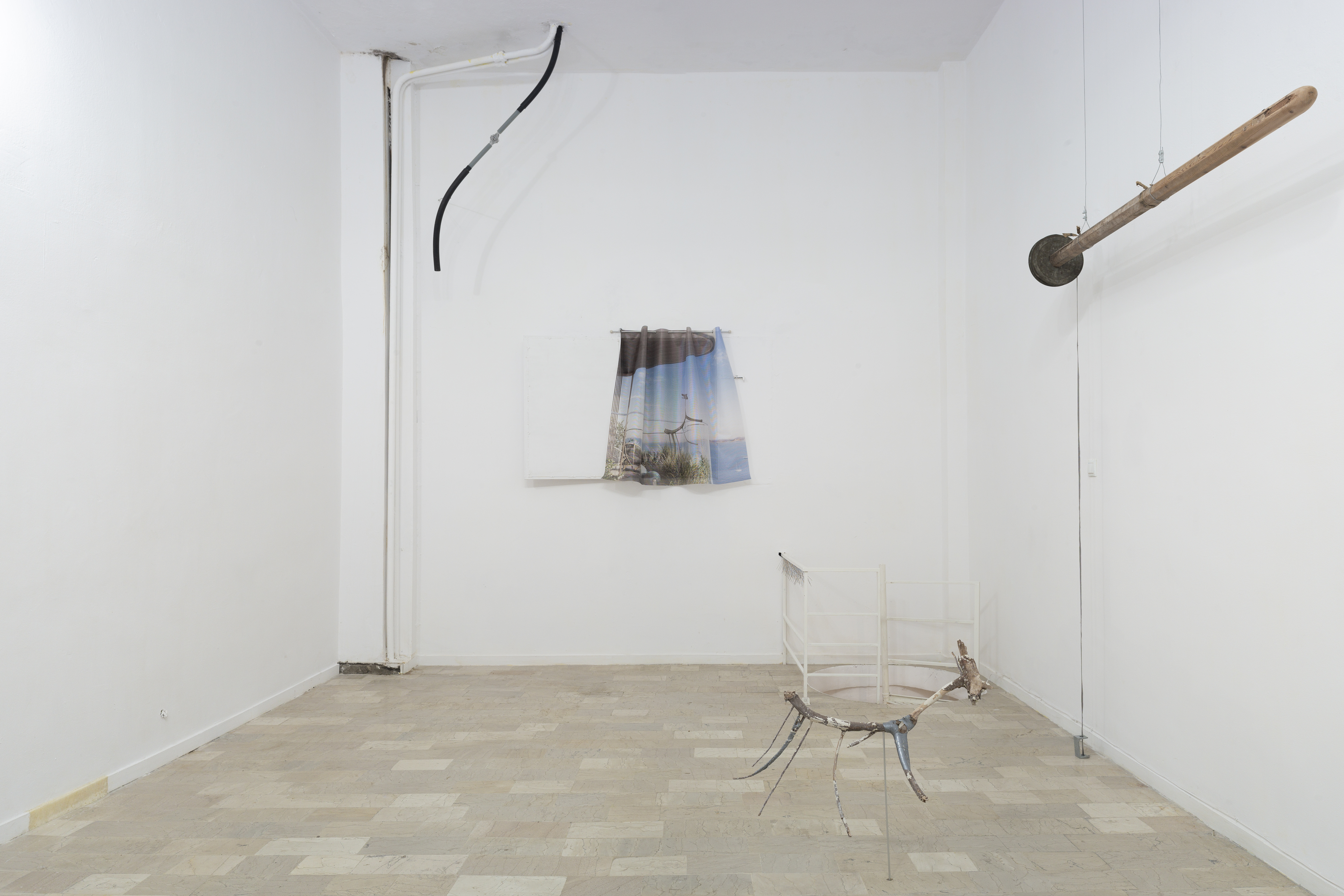gel office – Wish Upon a Shooting Star
27.11 — 05.01.25

Everything in a building is a portal, not just the portals. An architectural construction is a portal through which I can experience something that isn’t me, with or without some empirical guarantee that something that isn’t me exists. A work of art is thus on the side of reality, albeit in a magical and strange way. [1]
Wish Upon a Shooting Star derives from situated city megaproject showrooms. Coming from Riga, another periphery of the European Union, and sharing the same time zone with Athens, the artist duo gel office fabricates an upcoming gentrified poodle invasion in the middle of mixed-use urban development potentialities. While still existing through rendered nightmares without windows, these outlines simulate an archipelago of sleek urban presences, connected through the imaginary of abstraction. Entering the regeneration genre of fictional spaces, gel office sets up implicit frictions. It is the same place with gasping promises, whether it’s Athens, Dubai, or Riga – the Dubai of Europe.
Is there a way out?
Departing from René Boer’s text Smooth City, which critiques the evolution of urban development towards what he describes as ‘smoothness’ – a trend marked by polished, predictable, and homogenous urban spaces – the artists reinterpret this expression as an action. In this instance, Living Room becomes a portal of the uncanny date, hiding under the hope and promise of a shooting star. The sculptural assemblage constructs a hostile scenography of intertwined object ontologies. In the space, the artists are working with smoothly embedded forms and features, and are looking for ways how to redirect, dislocate, and mould them into a cosmos, where rendered realities meet in folds and glitches, inviting curves and cuts that set a blind date for both, perfect project image, and ghosts and monsters it might be hiding.
Paula Veidenbauma (b. 1997, Latvia) (@paulaveidenbauma) works on the meeting points of art, architecture, urbanism, and theatre. These encounters often encompass situated artistic practice, curatorial work, research, and writing. She often explores observed paradoxes as alliances with material properties through sculptural dramaturgies. The ongoing theory-grounded practice gravitates toward themes surrounding the politics of real estate, institutional practices, feminist phenomenology, and performing arts as a critical practice. Based in Vienna, Austria.
Diāna Mikāne (b. 1996, Latvia) (@m1aana) works at the intersections of curatorial and art practices, currently operating between Riga, and other satellite locations. Through curatorial projects that are both theoretically grounded and engaged with contemporary artistic practice, Diāna engages in a dialogue about the politics of space, memory-making and identity construction, often grounded in narratives and identity struggles rooted in a post-socialist space, merged with speculative future imaginaries.
Together, they form the artist duo gel office (@gel.office) that works at the intersection of art, performance, and architecture, practising art-making, curating, facilitation, and research.
Production artist:
Katariin Mudist’s (b. 1994, Estonia) (@katariin.mudist) practice delves into the multifaceted nature of humanity within social contexts. As she explores the intersection of visual and material-based art, her work often incorporates humour and irony to critique societal norms, focusing on themes of performativity, value, and materiality.
Photos by Frank Holbein
[1] Timothy Morton, ‘Portals’ in The Baltic Atlas, ed. Kārlis Bērziņš, Jurga Daubaraitė, Petras Išora, Ona Lozuraitytė, Niklāvs Paegle, Dagnija Smilga, Johan Tali, Laila Zariņa, Jonas Žukauskas (Berlin: Sternberg Press, 2016), p. 13.









